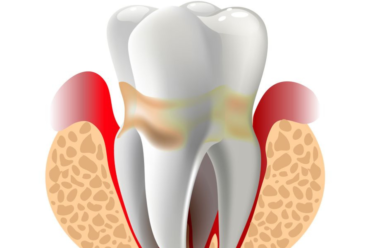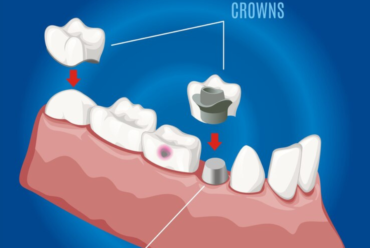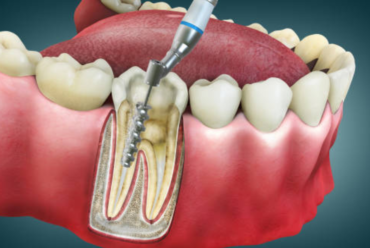What Are the Benefits of Undergoing a Root Canal Treatment?
Imagine waking up with a sharp, throbbing pain in your tooth. It’s the kind of pain that disrupts your day, making it difficult to focus on anything else. This is where root canal treatment (RCT) comes in—offering relief and saving your tooth. But why should you consider undergoing a root canal? In this article, we’ll dive into the key benefits of this often-misunderstood procedure and how it can help preserve your smile and overall oral health.
What is Root Canal Treatment?
A root canal is a dental procedure aimed at saving a tooth that has been severely infected or damaged. It involves removing the infected tissue (pulp) inside the tooth, cleaning out the canals, and sealing the tooth to prevent further infection. The tooth is then restored with a crown to ensure it functions and looks like a natural tooth. Contrary to popular belief, modern root canal treatments are typically painless due to advanced techniques and anesthesia.
The Benefits of Root Canal Treatment
- Preserving Your Natural Tooth
The most significant benefit of a root canal is the ability to save your natural tooth. When the pulp inside the tooth becomes infected or decayed, it can lead to tooth loss. A root canal removes the infection and seals the tooth, preventing the need for an extraction. Saving your natural tooth helps maintain your overall oral health and prevents the complications associated with missing teeth, such as shifting teeth and difficulty chewing.
- Pain Relief
A tooth infection is incredibly painful, causing persistent throbbing, sensitivity to hot or cold, and discomfort while chewing. Root canal treatment eliminates the infection causing the pain, offering significant relief. Most patients report that the pain from a root canal is comparable to having a filling placed, and it is often followed by a noticeable reduction in pain.
- Restoring the Function of Your Tooth
Once the root canal is completed and the tooth is restored with a crown, the tooth regains its full function. You’ll be able to chew, speak, and smile with confidence again. The restoration process ensures that the tooth remains strong and functional, allowing you to go about your everyday activities without worrying about discomfort or damage.
- Preventing Further Infection
An untreated tooth infection can spread to the surrounding teeth and gums, leading to more severe oral health issues, including abscesses or gum disease. By removing the infected pulp and sealing the tooth, a root canal treatment prevents the spread of infection, protecting your entire mouth from potential complications. In this way, the procedure not only saves the affected tooth but also preserves your overall oral health.
- Improved Aesthetic Results
In many cases, the tooth that requires a root canal may also be discolored or damaged due to the infection. Once the tooth is treated and restored with a crown, it can be made to match the color and appearance of your surrounding teeth. This gives you a natural-looking and aesthetically pleasing result that enhances the appearance of your smile.
- Avoiding the Need for Tooth Extraction
Without a root canal, the only alternative to an infected tooth may be extraction. While tooth extraction can sometimes be necessary, it comes with its own set of complications. Missing teeth can lead to shifting of surrounding teeth, bone loss, and the need for expensive restorations like implants or bridges. A root canal allows you to keep your tooth and avoid these issues.
- Cost-Effective Solution
While the initial cost of a root canal treatment may seem high compared to other dental procedures, it is a cost-effective solution in the long run. Extracting a tooth and replacing it with an implant or bridge can be more expensive and involve additional treatments. Root canal treatment is typically a more affordable option, as it saves your natural tooth and avoids the need for complex procedures in the future.
How to Know if You Need a Root Canal
It’s important to seek treatment as soon as you notice signs of infection or damage in your tooth. Some common symptoms that may indicate the need for a root canal include:
- Severe tooth pain or sensitivity, especially when chewing or touching the tooth
- Swollen or tender gums around the affected tooth
- Darkened or discolored tooth
- Persistent discomfort that doesn’t subside
- Pimple-like bump on the gums, which may drain pus
If you experience any of these symptoms, it’s crucial to visit your dentist for an evaluation. Early intervention can prevent the need for tooth extraction and save your tooth.
Conclusion
Root canal treatment offers numerous benefits, including pain relief, tooth preservation, and prevention of further infection. The procedure not only saves your tooth but also restores its function and appearance, allowing you to continue living a normal, healthy life. If you’re experiencing tooth pain or suspect an infection, don’t hesitate to consult with your dentist to discuss whether a root canal is right for you.
Are you ready to preserve your tooth and restore your smile with root canal treatment?







